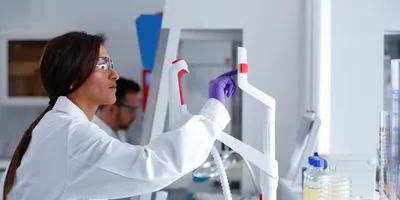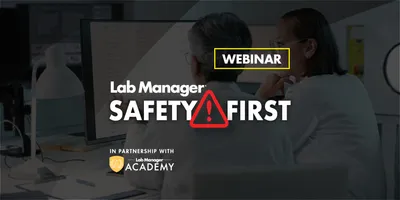Continual improvement is a core principle of lab quality systems. There are a wide variety of approaches to improvement projects that range from quick alterations to large projects. One tool that is effective for larger projects is DMAIC: define, measure, analyze, improve, and control. Using DMAIC structures the improvement process to ensure thoughtful decisions at each stage. Here are some tips to implement DMAIC in your lab:
Define
During the “define” stage, it is important to gather enough input to make informed decisions about the improvement opportunity and define its goals. Lab managers need to listen to stakeholders, staff, peers, line managers, and vendors to clearly understand the challenges and to gather insight on the available options. From this input, the lab prioritizes the issues and sets clear objectives for the change. Document the problem statement, communicating what problem is being solved, why the solution is important, and what success looks like.
Measure
Collect data that defines the current state of the lab and quantifies the problem to be solved. Evaluate the data and choose key performance indicators that help predict success for the lab. These data provide a meaningful baseline to monitor the improvement process to ensure that the changes are delivering the expected benefits. Involve staff who are most familiar with the change area. They understand the processes and the available data best. Ensure that all staff involved with the improvement project are trained to collect consistent and reliable data.
Analyze
Use the available data to investigate the root cause(s) of the issues. Depending on the improvement project, there are several root cause investigation tools available, like fishbone diagrams, Pareto charts, five why’s, and statistical analyses. These tools help organize the data and identify the root cause. Base decisions on data, rather than tradition, wishful thinking, or intuition. If there are gaps in the data, then document any assumptions, so they can be revisited as new data emerges.
Improve
During the “improve” stage, the lab develops and implements solutions that address the root cause(s) of the issue and help the lab reach its goals for the improvement project. This stage is dominated by defining experiments and testing hypotheses to search for reasonable solutions. Broaden solution building by involving staff in brainstorming and piloting potential changes. Take advantage of all the talent, expertise, and experience in the lab. Use the baseline to measure the effectiveness of potential solutions. Ensure the lab is making data-driven solutions.
Control
Once the best solution has been identified and implemented, sustain the change by preventing the lab from backsliding to previous habits and approaches. Drive this by updating standard operating procedures, training staff on the new workflows, and monitoring the work to ensure compliance. It is also helpful to use automation to reduce the number of decisions required and to use visual tools like signs, dashboards, and visual aids to support the new approach.
Lab Quality Management Certificate
The Lab Quality Management certificate is more than training—it’s a professional advantage.
Gain critical skills and IACET-approved CEUs that make a measurable difference.
To make these kinds of improvement projects easier over time, lab managers can develop a culture of learning. This will foster a continuous improvement mindset, improve communication around improvement opportunities, and support both individual and team development.
Embark on a transformative journey in lab management with the Lab Management Certificate program from Lab Manager Academy. We understand the challenges you face in driving productivity and exceeding goals, and we're here to support you every step of the way. Our program empowers you to overcome resistance to change, nurture staff engagement, and kindle innovation within your lab, all while fostering a culture of warmth and collaboration. Embrace generative leadership and the valuable insights of diverse voices as you guide your lab toward enduring success. Your lab's brighter future starts right here, and we're excited to be part of your journey. Discover more about the Lab Management Certificate program here.













